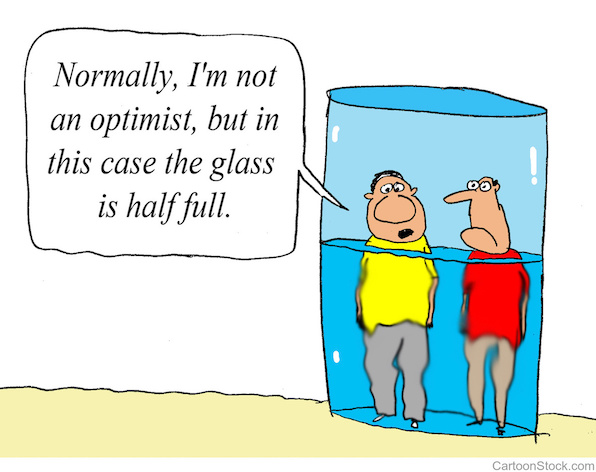Teams with an optimistic culture have the ability to envision a better future, are better to inspire and motivate, and are ultimately more likely to achieve a shared vision of success.
We wear different glasses when looking at the world. Are you an optimist or a pessimist? There is an interpretation of how we see the same situation. Optimistic people focus on the positive aspects of a situation, and are more likely to achieve their goals, and recover from disappointments faster than pessimists. It’s a personality trait but it’s also shaped by previous experiences and the environment around us.
When it comes to building a high performing team, we know that productivity and results are crucial. But many times, there is too much focus on the productivity rather than the positivity factor in team coaching.
Helping team members gain better self-awareness to recognize and change how they interpret different situations can create more positive outcomes. And embedding a culture of positivity can improve productivity.
Here are four simple ways to increase your team’s optimism:
- Acknowledge people: Acknowledgement means that you recognize someone’s character or qualities. Acknowledgment highlights the recipient’s inner strengths so that they can see them when they may not recognize at all in themselves. Acknowledgment can include what we notice about their stand, their growth, their learning and or what we see. For example, “you are stepping out from your comfort zone and your commitment to growths is outstanding”. This is different from complimenting (i.e. “good job”, “you are amazing”) which includes evaluation and judgment. Don’t forget acknowledgment can be more powerful if delivered in a few words and gets right of the heart of the matter.
- Use humor: Create an environment where people allowed to laugh. Humor contributes to creating a positive environment. There are clear benefits of humor at the workplace: less burnout, higher probability of learning, more collaboration, faster recovery from stressful situations and an increase in work effectiveness. Using humor releases tension and provides positive emotions. According to research, people who watched funny videos before completing a tedious task were more persistent (Cheng and Wang, 2015). However, knowing when to establish a playful mood and when to maintain a serious approach is a balancing act.
- Use positive body language: Body language includes nonverbal communications such as eye contact, facial expressions, posture, arms, legs, and distance. A confident positive person stands with shoulders back, maintains solid eye contact with a smiling face, and make purposeful and deliberate gestures with their hands and arms. It is important to think about your body language and the impression you are portraying as well as interpreting and understanding the body language of others. Understanding more about body language will help you to improve your communication skills and your relationship with others.
- Use positive language: Language is an exceedingly powerful tool. The way you express yourself will affect whether your message is received positively or negatively. Here are some suggestions:
- State what you want rather than what you don’t want
- Tell the recipients what can be done
- Suggest alternatives and choices available to the recipients
- Make it sound helpful and encouraging rather than bureaucratic
- Stress positive actions and positive consequences that can be anticipated
Communication is more just words, it also includes:
- How you say it – including the tone of your voice
- Why you say it – the intention behind the message
- When you say it- for example – during an argument, the time of the day


Thank you Dora. Humor is the best way to boost performance I think. A coach needs to balance the performance of all team.